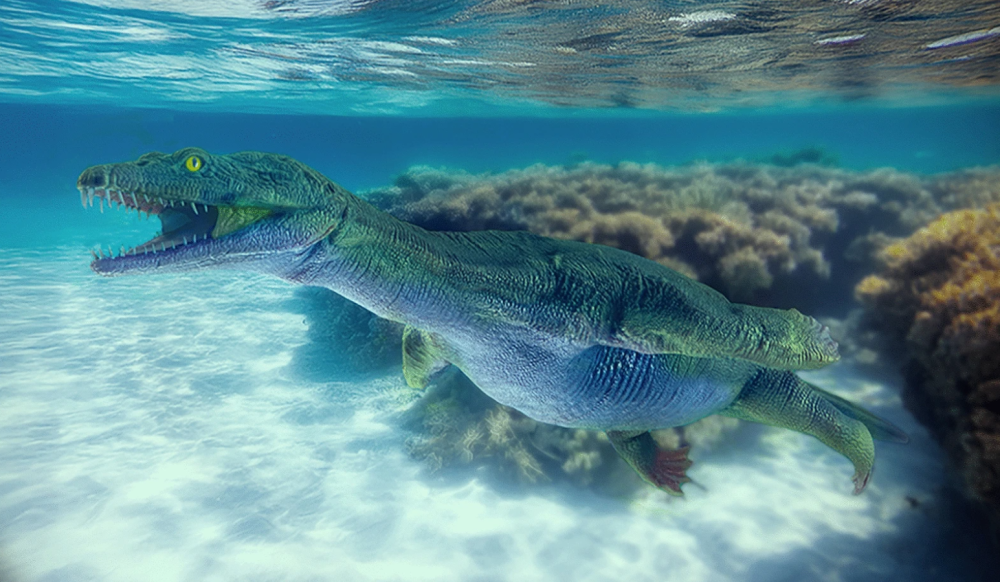It’s not always easy inferring behavior from the fossil record because most often all the squishy bits are gone and we’re left to fill in the gaps from the odd bony bits n’ bobs. Sometimes, however, ancient creatures make palaeontologists’ lives a bit easier by remaining virtually complete for say, oh I don’t know, 240 million years? A round of applause, please, for Lariosaurus valceresii.
The rest of this article is behind a paywall. Please sign in or subscribe to access the full content.
A new paper describes the near-perfect specimen that dates back to the Middle Triassic. It was found in the UNESCO World Heritage area of Monte San Giorgio, and has preserved skin that reveals the shape of the scales.
Fossil skin like this is invaluable because, for starters, it’s the first time we’ve ever found soft tissues preserved for this species. What it can tell us that the bones alone couldn’t is that this species had webbed hands and feet, which would’ve helped it to push its way through the water as it swam.
Furthermore, we can see from patches of skin behind the upper arms and along the front of the trunk that it had powerful forelimb retractor muscles. Together, these features suggest that Lariosaurus used its front limbs to swim in a “rowing-flying” motion, a bit like how modern seals use their flippers for rapid bursts of movement. This is an interesting development, as it lends support to the idea that the forelimbs were important as well as other parts of these animals’ bodies that have received more attention in the past.

Reconstruction of Lariosaurus valceresii while swimming with forelimbs positioned at the end of the “rowing” phase.
“The described skin outline of [this specimen] may provide an insight about the swimming style of Lariosaurus, wrote the study authors. “In nothosaurs in general, both the forelimbs and the tail were employed for swimming but the tail was considered the main propulsive organ providing lateral undulation.”
“However, several authors proposed that the strong forelimbs may have played an important role in propulsion as also supported by studies of long bones histology. The skin outline of [this specimen] and the inferred pattern of forelimb musculature supports the hypothesis that forelimbs may have played a preminent role in swimming, at least in Lariosaurus.”
This could set Lariosaurus aside from other swimming prehistoric reptiles like Ceresiosaurus, which was another long-necked predator swooshing around the ancient ocean. Just goes to show that different strokes for different folks is a notion that’s held true for 240 million years.
The study is published in the Swiss Journal of Palaeontology.
Source Link: First-Ever Lariosaurus With Preserved Skin Is One Of The Most Complete Sea Monsters We’ve Ever Found